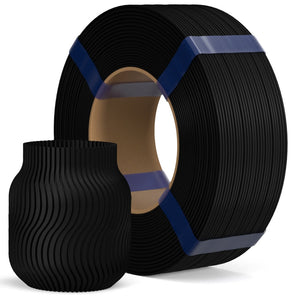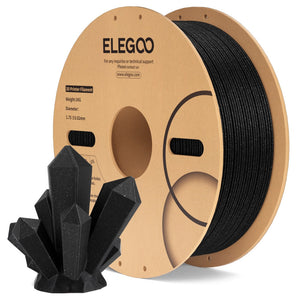We're seeing more and more 3D Printing Projects focusing on creating Braille solutions to enhance the quality of life for the visually impaired.
Overcoming Traditional Methods with TouchSee Technology
Discover the extraordinary advances in 3D printed braille technologies, empowering visually impaired individuals with tangible communication methods.
This article peels back the layers of this groundbreaking technique and sheds light on how it is making a difference.
Dive in to understand the mechanisms of 3D printers, models, and their applications in creating braille labels, from design to download, and even beyond to the innovative TouchSee system.
Article Outline
- The Pioneering World of 3D Print
- What is Braille and Its Importance?
- Transition to 3D Printed Braille: What Has Changed?
- Understanding the 3D Printer and the Design Process
- The Role of Software in Generating 3D Models
- Downloading Your Braille File: How Does It Work?
- 3D Printing Technology: Beyond Labels
- The Revolutionary TouchSee System
- Creating Braille Signage: A New Era in the Printing Industry
- The Future: What’s Next for 3D Printed Braille?
1. The Pioneering World of 3D Print
3D printing has been pushing the boundaries of traditional manufacturing methods. This groundbreaking technique has found its place in several industries, from healthcare to automotive.
But perhaps one of its most profound impacts is seen in creating 3D-printed braille. 3D printing has broadened the horizons for the visually impaired, providing tactile means of communication that were once limited.
With a resin printer individuals can create braille labels or even detailed tactile graphics, enhancing their interaction with the world.
2. What is Braille and Its Importance?
Braille is a system of touchable dots representing letters, numbers, and symbols. It's a lifeline for many visually impaired and blind individuals, opening doors to literacy, independence, and equal opportunities.
But despite its importance, braille resources have often been limited and expensive. Here's where 3D printing comes in.
3. Transition to 3D Printed Braille: What Has Changed?
The transition from traditional braille production methods to 3D printing has brought a significant shift. The power of 3D-printed braille lies in its accessibility and affordability. With a 3D printer, users can design and print their braille labels or signage right from the comfort of their homes.
This eliminates the need for purchasing costly braille embossers or waiting for items to be shipped. Moreover, 3D printing technology offers great flexibility, allowing users to create more than one label, thereby customizing their environment to their needs.
4. Understanding the 3D Printer and the Design Process
At the heart of this revolutionary technique lies the 3D printer. By building a model layer by layer from a specific substrate, 3D printers can create tactile dots that form braille letters. Designing a 3D model for print starts with a software program, such as OpenSCAD.
This tool enables users to generate a 3D printable design by typing their text, which then gets converted into braille. The final design can be saved as STL files, ready to be sent to the 3D printer.
5. The Role of Software in Generating 3D Models
Software plays a crucial role in 3D-printed braille. The software takes the user's input, translates it into the braille alphabet, and creates a 3D model.
This model, containing the braille dots, can then be sent to a 3D printer for printing braille labels or other tactile graphics.
6. Downloading Your Braille File: How Does It Work?
Once the 3D model is ready, it needs to be downloaded and sent to a 3D printer. Downloading the file is a simple process; the design software generates a file that can be saved to your device and then transferred to your 3D printer.
7. 3D Printing Technology: Beyond Labels
While 3D-printed braille labels are a fantastic application of this technology, it doesn’t stop there. 3D printers have been used to create complex tactile graphics, maps, and even educational modules.
This has unlocked new avenues for visually impaired individuals, making previously inaccessible information tactile and understandable.
8. The Revolutionary TouchSee System
A new 3D printing development is the TouchSee system. This groundbreaking UV printing technology can create full-color 3D printed graphics with braille. It has added another dimension to tactile learning, allowing visually impaired users to touch and feel the graphics while reading the braille labels.
9. Creating Braille Signage: A New Era in the Printing Industry
The use of 3D printers for creating braille signage is a game-changer in the printing industry. It’s no longer about “get it 3D printed”; now, users can design and print their signage, enabling them to create personalized, tactile signage for various applications.
10. The Future: What’s Next for 3D Printed Braille?
As 3D printing technology continues to evolve, the possibilities for 3D printed braille are virtually limitless. The technology will only become more accessible, leading to increased independence and opportunities for the visually impaired.
Key Takeaways
- 3D printing offers a cost-effective, accessible way to create braille labels and signage.
- The design process involves software like OpenSCAD to generate 3D models.
- Users can download these models and print them using a 3D printer.
- The technology has applications beyond labels, enabling the creation of complex tactile graphics.
- TouchSee system takes 3D printing a step further by integrating color and braille.
- The future for 3D printed braille is bright, with the technology becoming increasingly accessible.
Other Cool 3D Prining Growth Niches to Expore
Through 3D printing, we witness the evolution of board game projects, giving a fresh spin to tabletop gaming experiences. diorama projects have reached new heights, and the cosplay community is abuzz with innovative creations. 3D Jewelry artisans, too, have embraced this technology, crafting unparalleled pieces.
In terms of practicality, 3D printing is proving indispensable for those passionate about DIY home projects, enabling them to design specialized garden tools and more.
Toy projects are increasingly emphasizing learning; indeed, we see most schools these days have a 3D printer on-site.
dentistry is another sector reaping the benefits, with tools tailor-made for patient needs.



































































































































